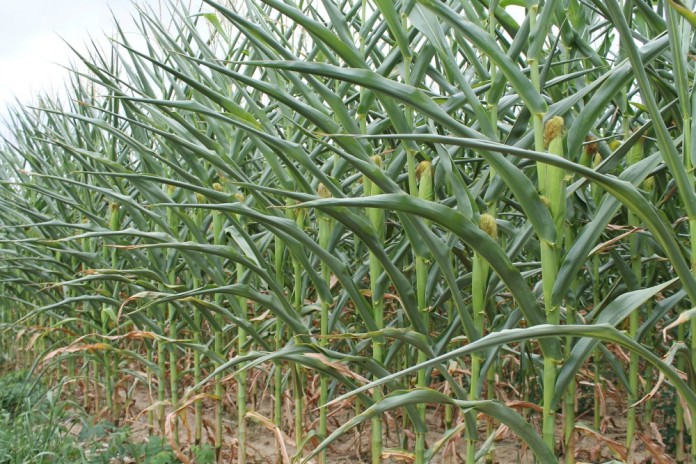It’s a familiar story this time of year about the weather. Some farms catch all the rainstorms, while others, just a road over, will miss them all. Considering that much of northeast Ohio is currently experiencing a moderate drought, according to the U.S. Drought Monitor (droughtmonitor.unl.edu), more farms in our area are missing the rain than catching it.
You may have noticed some of the signs of drought out in the fields, including curled corn leaves, non-uniform crop stands, prominent tile lines and lower hay yields. Additionally, you may have some corn or forages showing signs of nutrient deficiency.
The cause. Soil moisture is critical for nutrient uptake in plants, so it’s not surprising to see some nutrient-deficient crops this year. Sulfur, manganese, potassium and zinc deficiencies have been observed on my weekly crop scouting trips throughout Trumbull County.
Once a nutrient deficiency has been identified, there is a natural impulse to apply a fertilizer to correct the deficiency. If you have those impulses, do your best to lock them away with your most embarrassing memories and forget they ever existed.
Visible deficiency in the crop does not mean that a nutrient deficiency exists in your soil. What is likely happening is that the root system is not fully developed, which means there is less surface area on the roots with which they can uptake nutrients. Additionally, the lack of water means that nutrients are not moving through the soil.
It’s more common to see nutrient deficiencies in young crop plants since they do not have a fully developed root system yet. As the crop develops and the roots expand and encounter more nutrients, you will likely see some crops grow out of their deficiencies.
Many fields that have had deficiencies later developed new, dark green leaves after a rain, although some manganese-deficient fields still had older yellow or brown leaves. Soil testing and tissue testing are the best ways to determine if you need to adjust your soil fertility program.
How are forages fairing? Although nutrient-deficient crops are discouraging, there is little evidence that it will reduce forage quality. Harvest yields of hay may be down, but there should be no noticeable effects on quality. More concerning is the potential for nitrate and prussic acid toxicity. Both can be deadly to livestock, and high nitrate levels in silage can lead to deadly “silo gases.”
High nitrate levels in corn silage, when ingested by animals, can lead to a decreased ability for their blood to carry oxygen. This, in turn, can lead to incoordination, staggering, abortion, excess salivation and death. Conditions that lead to the accumulation of high nitrate levels in forages include cloudy conditions (including smoke haze), high nitrogen and/or manure application, nutrient deficiencies, rainfall after prolonged dry periods and frost.
Beware of toxicity. Other than frost, our location is experiencing everything on the list above, which means we are at higher risk for nitrate toxicity heading into corn silage harvest season. Ensiling corn with high nitrate levels can reduce the overall nitrate concentrations by one-third to one-half, but if you suspect nitrate toxicity, it is best to test the feed. Nitrate-nitrogen levels below 1000 ppm are not toxic, but levels above this will require management steps to ration and mix out higher nitrate silage to safe levels.
Like nitrate toxicity, prussic acid also can lead to a decreased ability for blood to carry oxygen. Prussic acid can develop in a variety of forages, but it is especially concerning with sorghum, sudan grass and Johnsongrass. Decreased hay yields and spotty corn germination has led some dairy farms to use short-season forage options, which may include sorghum-sudan grass.
Lower hay yields and dry weather may encourage some producers to bale lower-quality hay including Johnsongrass. Grazing these drought-stressed crops or feeding “green-chop” will increase your likelihood of prussic acid toxicity. Prussic acid concentrations decrease during the hay drying process, and ensiled forages should not be fed until eight weeks after harvest.
Forage testing can help diagnose nitrate and prussic acid toxicity issues and should be used if there is concern. Hopefully, we get sufficient rain between now and harvest, and these will all be theoretical problems.













